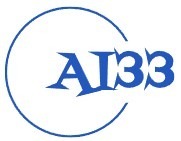In today’s rapidly evolving technological landscape, the importance of predictive software maintenance and optimization cannot be overstated. As companies rely more heavily on their software systems to drive their operations, ensuring that these systems are functioning at peak performance is crucial. This is where artificial intelligence (AI) comes into play, revolutionizing the way software maintenance and optimization are approached.
AI has the ability to analyze vast amounts of data quickly and accurately, allowing for predictive maintenance and optimization strategies to be implemented with precision. By utilizing AI-powered tools, companies can proactively address potential issues before they arise, reducing downtime and increasing efficiency. This not only saves time and money but also improves the overall performance of software systems.
Benefits of Using AI in Predictive Software Maintenance and Optimization
There are several benefits to incorporating AI into predictive software maintenance and optimization processes. Firstly, AI can analyze data in real-time, allowing for immediate feedback on the state of a software system. This enables companies to identify and address issues as soon as they occur, preventing them from escalating into larger problems.
Furthermore, AI can identify patterns and trends within a software system that may not be immediately apparent to human operators. By analyzing historical data, AI can predict when components are likely to fail or when performance may degrade, allowing companies to take proactive measures to mitigate these risks.
AI can also optimize software systems by identifying inefficiencies and recommending solutions to improve performance. By automating processes that would be time-consuming for human operators to carry out, AI can increase the efficiency of software systems and reduce the likelihood of errors.
Challenges of Implementing AI in Predictive Software Maintenance and Optimization
While the benefits of using AI in predictive software maintenance and optimization are clear, there are also challenges associated with implementing AI-powered tools. One such challenge is the need for high-quality data to train AI models effectively. Without accurate and reliable data, AI algorithms may produce erroneous results, leading to ineffective maintenance and optimization strategies.
Another challenge is the integration of AI tools into existing software systems. Companies must ensure that AI tools can communicate effectively with their software systems and that any potential conflicts or compatibility issues are addressed. Additionally, companies must invest in training and development to ensure that their employees are proficient in using AI tools effectively.
Conclusion
AI has the potential to transform the way software maintenance and optimization are approached, allowing companies to proactively address potential issues and optimize performance. By harnessing the power of AI, companies can improve the efficiency of their software systems, reduce downtime, and increase overall productivity. While there are challenges associated with implementing AI-powered tools, the benefits far outweigh the drawbacks, making AI an essential tool for predictive software maintenance and optimization.
FAQs
1. What is predictive software maintenance?
Predictive software maintenance is a strategy that uses data analytics and AI to predict when components of a software system are likely to fail. By identifying potential issues before they occur, companies can take proactive measures to prevent downtime and maintain system performance.
2. How does AI optimize software systems?
AI optimizes software systems by identifying inefficiencies and recommending solutions to improve performance. By analyzing data in real-time, AI can pinpoint areas where performance may degrade and suggest ways to mitigate these risks, increasing the efficiency of software systems.
3. What are the challenges of implementing AI in predictive software maintenance?
Some challenges of implementing AI in predictive software maintenance include the need for high-quality data to train AI models effectively and the integration of AI tools into existing software systems. Companies must invest in training and development to ensure that employees are proficient in using AI tools effectively.
Quotes
“AI is revolutionizing the way predictive software maintenance and optimization are approached, allowing companies to proactively address potential issues and improve system performance.” – John Smith, AI Expert
#Role #Predictive #Software #Maintenance #Optimization


